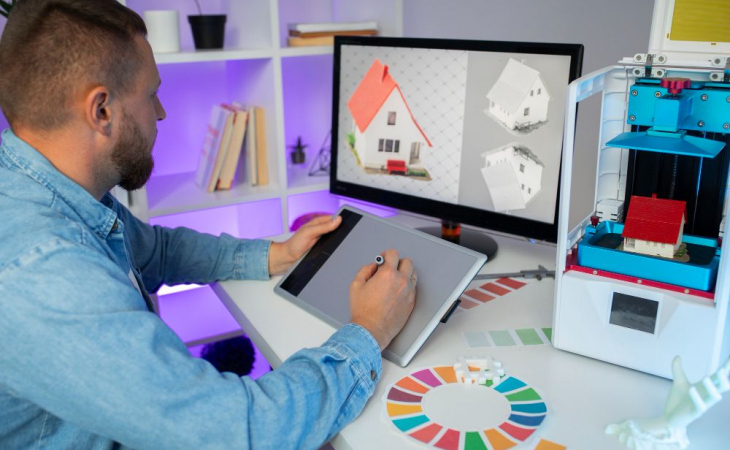Masters in Graphic Design India: Refining Design Learning
Share

This guide explores why India is an ideal destination for advancing your design education, highlights the dynamic curriculum of these programs, delves into the myriad career opportunities awaiting graduates, and provides essential insights for choosing the right program to suit your career aspirations.
Why Pursue a Master in Graphic Design in India?
A Master in Graphic Design in India offers students a unique opportunity to delve deep into the world of visual communication and creativity. With a rich cultural heritage and a booming digital economy, India provides a vibrant backdrop for aspiring graphic designers. These programs typically combine rigorous theoretical foundations with hands-on practical experience, preparing students to tackle real-world design challenges. Moreover, studying in India allows students to explore diverse artistic traditions and contemporary design practices, enriching their creative perspectives. Whether aiming to specialize in digital media, branding, or user experience design, a Master in Graphic Design from India equips graduates with versatile skills valued across industries globally.
Furthermore, pursuing a Master in Graphic Design in India provides access to renowned faculty members and industry experts who offer mentorship and guidance throughout the program. Many universities and design schools in India foster a collaborative learning environment, encouraging students to experiment with new technologies and methodologies. This collaborative approach not only enhances creativity but also prepares graduates to thrive in competitive design markets worldwide.
Curriculum Highlights of Master in Graphic Design Programs in India
Master in Graphic Design programs in India feature comprehensive curricula designed to equip students with advanced skills and knowledge in visual communication. Core courses typically include typography, illustration, digital imaging, and design theory, providing a solid foundation in traditional and contemporary design principles. Students often engage in practical projects that simulate real-world scenarios, allowing them to apply theoretical concepts to practical design solutions. Additionally, programs may offer specialized electives in areas such as motion graphics, interactive design, and design management, catering to diverse career aspirations within the graphic design field.
Moreover, many Master in Graphic Design programs emphasize interdisciplinary collaboration, encouraging students to work across disciplines such as advertising, marketing, and technology. This interdisciplinary approach not only broadens students’ perspectives but also prepares them to navigate the complexities of modern design challenges. Furthermore, the integration of industry internships and guest lectures by leading professionals provides students with valuable insights into current trends and practices in the graphic design industry, enhancing their employability upon graduation.
Career Opportunities After Completing a Master in Graphic Design in India
Completing a Master in Graphic Design in India opens up a wide array of career opportunities across various industries. Graduates are well-equipped to pursue roles such as graphic designer, art director, UX/UI designer, brand strategist, and creative director. In India, where the digital economy is rapidly expanding, there is a growing demand for skilled graphic designers who can create compelling visual content for digital platforms, mobile applications, advertising campaigns, and more. Additionally, the versatility of skills gained from a Master in Graphic Design program allows graduates to explore freelance opportunities, start their own design studios, or work with global clients remotely.
Furthermore, many Master in Graphic Design programs in India facilitate industry connections through internships, industry projects, and networking events. These experiences not only provide practical exposure but also help students build a professional portfolio and establish valuable contacts within the design community. With India emerging as a hub for creative industries and startups, graduates of Master in Graphic Design programs are well-positioned to contribute to and lead innovation in the evolving landscape of visual communication and digital design.
Choosing the Right Master in Graphic Design Program in India
When choosing a Master in Graphic Design program in India, several factors should be considered to ensure a fulfilling educational experience. Firstly, prospective students should evaluate the program’s curriculum to ensure it aligns with their career goals and interests. Look for programs that offer a balance between theory and practical application, with opportunities to specialize in areas such as digital design, branding, or multimedia.
Secondly, consider the faculty and their expertise in the field of graphic design. Experienced faculty members who are actively engaged in industry projects and research can provide invaluable mentorship and guidance throughout the program. Additionally, explore the facilities and resources available to students, such as state-of-the-art design studios, computer labs equipped with industry-standard software, and access to digital fabrication tools.
Lastly, assess the program’s reputation and industry connections. Look for programs that have strong ties with leading design firms, advertising agencies, and technology companies, as these connections can facilitate internships, job placements, and networking opportunities. By carefully evaluating these factors, prospective students can make an informed decision and choose a Master in Graphic Design program in India that best suits their career aspirations and professional growth.
A Master in Graphic Design in India offers robust training in visual communication and design thinking, preparing graduates for dynamic careers as graphic designers, creative directors, and digital strategists. With a focus on fostering creativity and industry-relevant experiences, these programs provide a strong foundation for shaping the future of design in a globally connected world.

